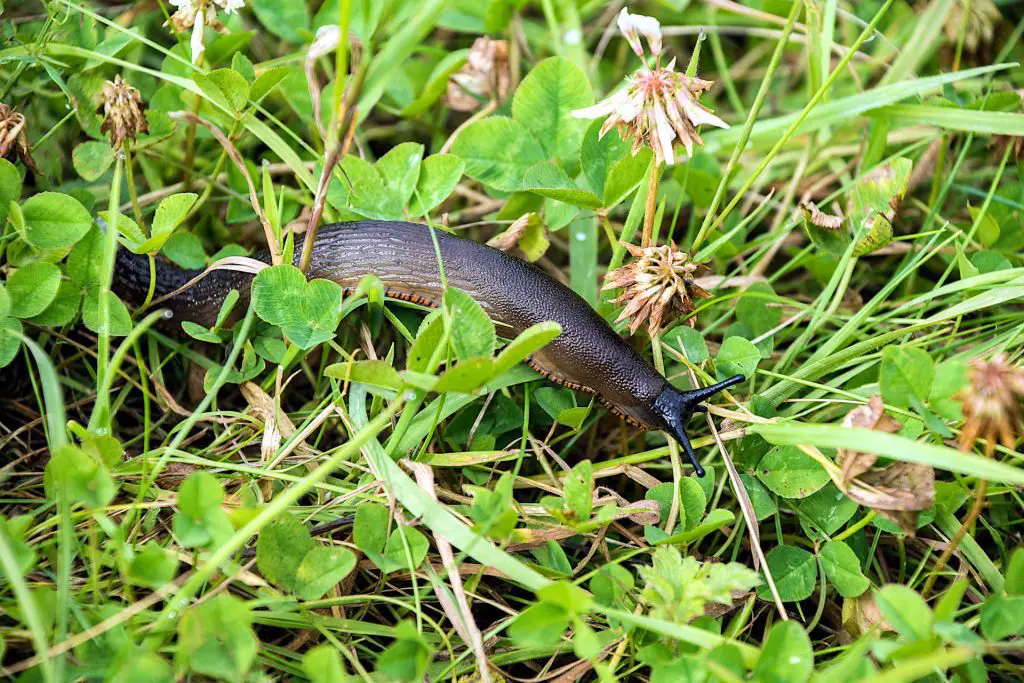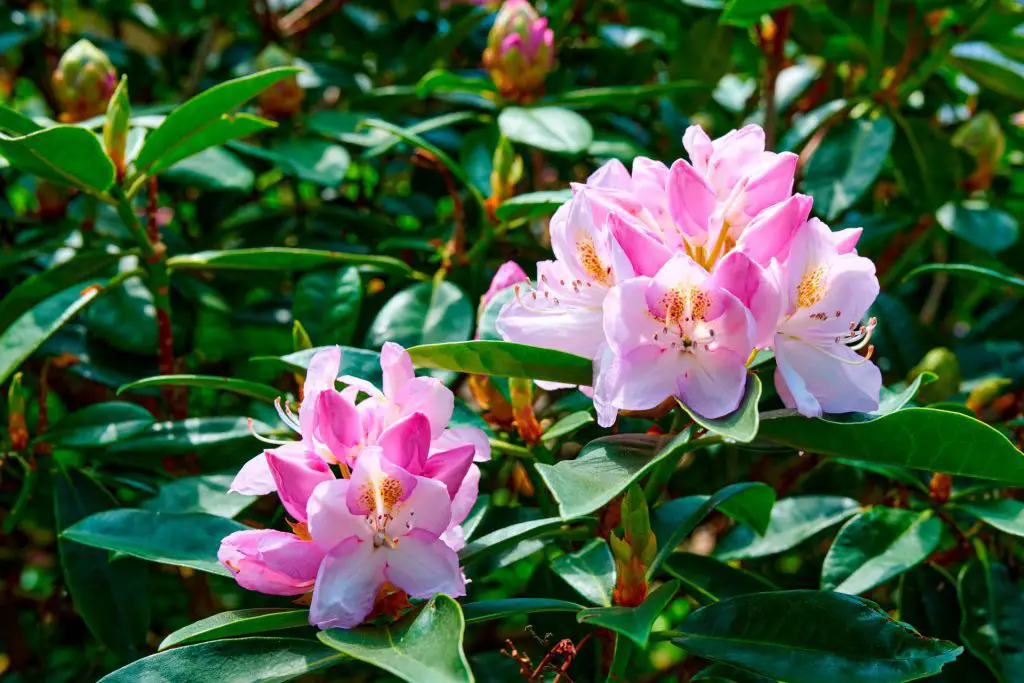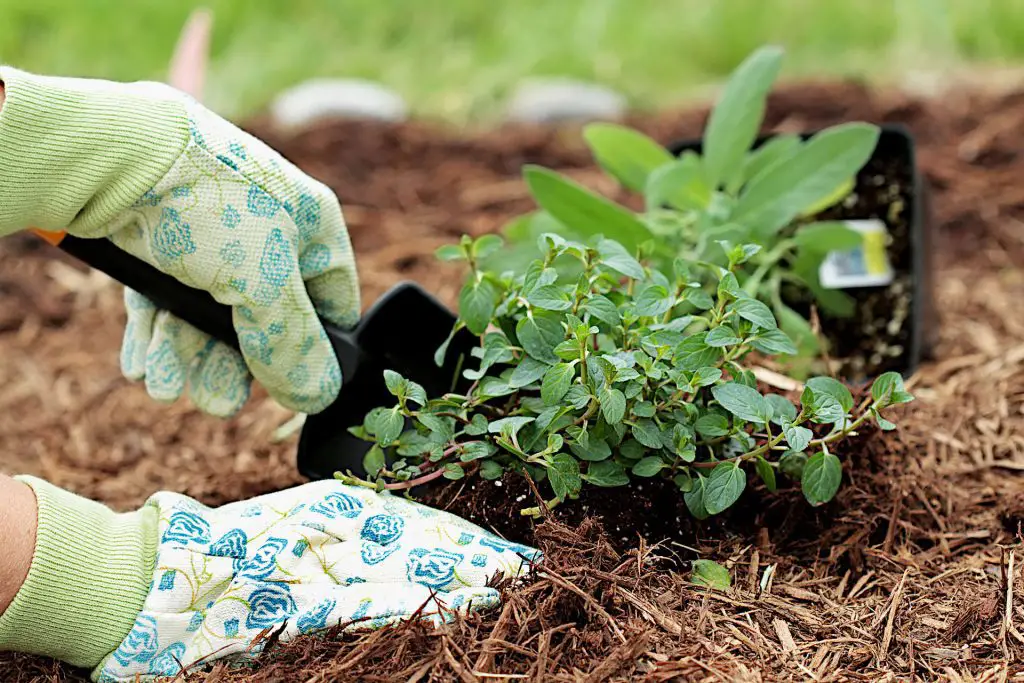Spring is in Full Swing: Gardening Tasks for May
As the weather starts to warm up and another month ticks by on the gardening calendar, it’s time to roll up our sleeves and get our hands dirty in the garden. Below, we’ll be discussing some essential gardening tasks for May that should help ensure a bountiful and successful growing season.
May is a crucial time for gardeners, as it marks the beginning of the growing season in earnest and it is time to build on April’s gardening jobs. Performing the right gardening jobs in May sets the stage for a successful harvest in the months ahead. Neglecting these tasks can lead to stunted growth, poor yields, and increased susceptibility to pests and diseases.
So, what gardening jobs should you be focusing on in May? We’ll be covering a variety of topics in this article, including slug control, companion planting, sawfly control on gooseberries, supporting tall perennials, deadheading camellias, planting out pot-grown shrubs, mulching, and sowing beans in root trainers or pots. We’ll also be highlighting some other important tasks to keep in mind, such as planting tomatoes into large containers, bringing in pots of strawberries for early harvest, and checking for signs of pests.
Slugs Control in the Garden

Of all the gardening tasks for May that you might need to do, dealing with slugs is the least pleasant. Slugs are one of the most common garden pests, and they can cause significant damage to young seedlings. During May, you are likely to see a noticeable increase of these slimy creatures, which feed on the leaves, stems, and roots of plants, leaving behind a trail of destruction in their wake. If left unchecked, slugs can quickly decimate an entire garden bed, ruining months of hard work in just a few nights.
Fortunately, there are several methods gardeners can use to control slugs. One effective approach is to set up beer traps. To do this, simply bury a small container, such as a plastic cup or yogurt container, in the soil near the affected plants. Fill the container with beer, which will attract the slugs. They’ll crawl in, get drunk, and drown in the liquid. Empty the container and refill it with fresh beer every few days for best results.
There are also a variety of video resources available to assist in controlling slugs. These videos offer step-by-step instructions on how to set up beer traps, as well as other methods for controlling slugs, such as using copper tape or diatomaceous earth. By following the advice in these videos, gardeners can effectively control slugs and protect their plants from damage.
It’s important to note that slugs are most active in damp conditions, so gardeners should take care to avoid overwatering their plants. They should also remove any debris, such as fallen leaves or dead plant material, which can provide a hiding place for slugs during the day.
Companion Planting

Companion planting is a technique of growing different plants in close proximity, and it offers numerous benefits to gardeners. With May being an active planting time, it is a good time to consider your planting strategy. By planting certain crops together, you can improve soil quality, attract beneficial insects, deter pests, and increase overall productivity.
Companion planting is an essential technique for maximizing your yields and increasing your chances of a successful harvest. Plants that are grown together can complement each other in various ways, such as by helping each other’s growth, reducing the spread of diseases, and deterring pests.
Some common companion plants include marigolds, which help to deter pests like nematodes and aphids, and beans, which can fix nitrogen into the soil, benefiting other plants in the area. Other popular companion plants include tomatoes, basil, and carrots.
By carefully choosing which plants to grow together, you can create a healthy and thriving garden ecosystem that will benefit all your crops. Consider researching companion planting combinations that work well in your area to get the most out of your garden.
Sawfly Control on Gooseberries
Dealing with sawflies should be at the top of any list of gardening tasks for May, particularly if you are growing gooseberries. Sawfly is a common pest that can have a significant impact on the health of gooseberry plants. These insects can quickly strip the leaves from the plant, leaving it vulnerable to further damage and disease. It is essential to control sawflies to ensure the health and productivity of your gooseberry plants.
One effective method of controlling sawflies is through pruning the gooseberry bushes into a goblet shape. This shape allows better air circulation and light penetration, which can reduce the risk of sawfly infestation. Additionally, goblet pruning helps to concentrate the plant’s energy on producing fruit rather than foliage.
Pruning should be done in spring, with May being an ideal time, before the leaves emerge. Start by removing any dead, diseased, or damaged wood, then cut back any stems that are crossing or rubbing against each other. Next, select 4-6 of the healthiest, most vigorous stems to keep and remove the rest. Finally, cut back the remaining stems to around 10-15cm from the base of the plant.
Supporting Tall Perennials
Perennials can add beauty and interest to any garden, but without proper support, taller varieties can flop over or break, leaving unsightly gaps in your garden beds. This is why supporting tall perennials is essential for maintaining a healthy and aesthetically pleasing garden.
One reason it is important to support perennials is that their tall, top-heavy growth can cause them to become unbalanced and fall over, especially in areas with high wind or heavy rain. Without proper support, this can lead to damaged stems, foliage, and flowers, which can impact the overall health of the plant and its ability to produce blooms.
There are several support structures that can be used for perennials, including stakes, trellises, and cages. Stakes are useful for single-stemmed plants that require individual support, such as delphiniums or lupines. Trellises are ideal for climbing perennials, such as clematis or sweet peas. Cages are perfect for bushy plants that require all-around support, like peonies or dahlias. It is important to choose the right support structure based on the specific needs of each plant.
Placing support structures for perennials is crucial to their success in the garden. It is best to install them when the plants are still young and small, so that they grow up through the supports and become trained to grow vertically. If supports are added later in the growing season, it can be more difficult to train the plant to grow properly, and it may not be as effective in preventing breakage.
Deadheading Camellias
Camellias are beautiful shrubs that produce lovely flowers in a variety of colors. As we saw with pansies back in January’s gardening tasks, deadheading is an essential gardening task that can help prolong the flowering period of camellias.
Deadheading camellias refers to the process of removing the spent blooms from the plant. This helps to encourage new growth and prolong the blooming period of the plant. By deadheading, the plant is also prevented from putting energy into producing seeds, which means more energy can be focused on producing new blooms.
To deadhead camellias, simply cut off the spent blooms using a pair of sharp scissors or pruning shears. Be sure to cut the stem just above the first set of healthy leaves. This will help to prevent any damage to the plant and will promote healthy growth.
Planting Out Pot-Grown Shrubs

As the weather begins to warm up in May, it’s an excellent time to start planting pot-grown shrubs that we started from seed during February’s gardening tasks in your borders and beds. Properly planting them is essential to ensure their healthy growth and longevity.
To plant pot-grown shrubs safely, start by digging a hole that is twice the size of the pot and a little deeper than the rootball. Once the hole is dug, add some organic matter like compost to the bottom to help with drainage and promote root growth.
When it comes to selecting a location for planting, it’s essential to avoid areas that are prone to waterlogging. Poor drainage can cause the roots to rot and the plant to die. Additionally, make sure to choose an area that is suitable for the type of shrub you are planting, taking into account factors such as sunlight, soil pH, and moisture levels.
When placing the shrub into the hole, make sure the top of the rootball is level with the soil surface. Fill the hole with soil and gently firm it down around the shrub to remove any air pockets. Then water the shrub thoroughly.
One helpful tip for planting pot-grown shrubs is to plant them in square holes instead of round holes. The reason for this is that roots tend to grow in a circular pattern when they encounter resistance. Planting in a square hole encourages the roots to spread out and become established more quickly, leading to a healthier plant in the long run.
Mulching
Mulching is an essential gardening technique that involves covering the soil with a layer of organic or inorganic material. Mulching offers numerous benefits to gardeners and their plants. One of the most significant benefits of mulching is that it helps to cut down weeds, reducing the need for weeding and saving gardeners a lot of time and effort. Mulching also helps to keep the root zones of plants cool, which is important during hot weather as it helps to prevent heat stress and water loss.
In addition, mulching is crucial in retaining moisture in the soil, which is particularly beneficial during dry spells when water is scarce. By covering the soil with mulch, gardeners can reduce the amount of watering needed to keep plants healthy. Mulching also helps to keep warmth in the soil, which is essential during the colder months. The mulch acts as a blanket, retaining heat in the soil and protecting plant roots from frost damage.
There are various types of materials that can be used for mulching, including compost, wood chips, leaves, straw, and gravel. The choice of mulch depends on the specific needs of the plants and the gardener’s preferences. Regardless of the type of mulch used, the benefits of mulching are undeniable.
Sowing Beans in Root Trainers or Pots
When it comes to planting climbing plants, such as beans, using root trainers or pots can provide a number of benefits. These containers allow the plants to establish strong root systems, which can lead to healthier and more productive plants. The root trainers are tall, thin containers that encourage the plant to grow downwards, rather than in circles like it would in a traditional round pot.
Why Use Root Trainers
By growing downwards, the roots are able to find and absorb more nutrients and water from the soil, helping the plant to grow larger and produce more beans. Additionally, planting in root trainers can help prevent transplant shock and damage to the root system that can occur when moving the plant to its final planting location.
Another benefit of using root trainers is that they help with air pruning. When the roots reach the bottom of the trainer, they are exposed to air, which causes them to dry out and die. This process encourages the plant to develop more roots, leading to a more extensive and robust root system.
Importance of Root Trainers
Planting beans in root trainers is an important step in ensuring a successful crop. The use of root trainers can help produce healthier plants with more robust root systems, leading to better yields and a higher quality crop. By providing a better-growing environment for the plants, root trainers can help ensure that your bean harvest is bountiful and delicious.
Other Gardening Tasks for May
May is an excellent time to get your garden in shape and prepare it for the summer months ahead. In addition to the tasks mentioned earlier in this article, there are several other gardening jobs you can do in May to keep your garden looking its best.
One job you can do is to plant tomatoes into large containers. Tomatoes grow best in soil that is rich in nutrients and well-draining, and planting them in large containers can provide these conditions. It is also essential to ensure that the tomato plants receive plenty of sunlight and water.
Another job you can do is to bring in pots of strawberries for early harvest. Strawberries are a delicious and nutritious fruit that can be grown in pots or containers. Bringing them inside early can help them mature faster, allowing you to enjoy their delicious flavor earlier in the season.
Finally, it is crucial to check for signs of pests in your garden. May is a month when pests such as aphids and whiteflies can be very active. Inspect your plants for any signs of damage, such as holes in the leaves or wilting, and take appropriate action to prevent the pests from spreading to other plants in your garden.
Takeaway
By completing these gardening tasks for May, you can ensure that your garden stays healthy and beautiful throughout the summer season and help lay the foundations for the gardening tasks that are required in June.
Further Reading
- Oregon State University: May garden calendar
- University of Minnesota: May Gardening Tips
